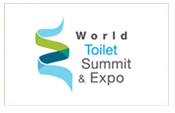Final Comments on LEED-ND: Can you really promote walkable communities while remaining silent on public restroom availability?
The process of developing the LEED-Neighborhood Development rating system is now coming to a close with a final call for comments by June 14, 2009.
This joint venture of the Congress for the New Urbanism, the US Green Building Council, and the Natural Resources Defense Council is a powerful and practical tool for environmental sustainability. Where LEED looks at buildings, LEED-ND
http://www.nrdc.org/cities/smartgrowth/leed.asp considers how they are integrated into compact, mixed-use neighborhoods and walkable, transit-oriented communities.
Buildings generate more than a third of greenhouse gases and other environmental impacts. However, people moving themselves and goods among buildings are responsible for another third. LEED-ND is a comprehensive set of guidelines – with a rating system rating system the offers points for alternatives to sprawl and rewards points for development that reduces the need to drive.
But has LEED-ND looked at what else needs to be done to get people out of their cars and onto their feet and public transit?
People are comfortable strolling in downtown when there are public facilities.
Public restrooms get people out of cars and onto their feet, bicycles and mass transit. Commuters need restrooms along their route.
Public restrooms promote fitness by allowing people to exercise in open space and in so doing provide natural surveillance.
Public restrooms contribute to public health. Involuntary urinary retention is detrimental to physical health. Mental health suffers when people want to be out with their families and friends but restrooms are not available.
Public restrooms serve the “restroom challenged”,
http://www.americanrestroom.org/pr/who.htm people with both normal conditions – pregnancy, young age, old age etc – and a range of medical conditions, many of which are invisible.
Fundamental to historical urban development was recognition of the need of all human beings to urinate and defecate. In fact, a hallmark of a great city was its ability to deal with this reality.
Could it simply be that old-fashioned reluctance to consider these basic, albeit unappealing, circumstances of human existence have blinded the world most talented planners and environmentalists?
Or is it me who is missing something?
The process of developing the LEED-Neighborhood Development rating system is now coming to a close with a final call for comments by June 14, 2009.
 This joint venture of the Congress for the New Urbanism, the US Green Building Council, and the Natural Resources Defense Council is a powerful and practical tool for environmental sustainability. Where LEED looks at buildings, LEED-ND considers how they are integrated into compact, mixed-use neighborhoods and walkable, transit-oriented communities.
This joint venture of the Congress for the New Urbanism, the US Green Building Council, and the Natural Resources Defense Council is a powerful and practical tool for environmental sustainability. Where LEED looks at buildings, LEED-ND considers how they are integrated into compact, mixed-use neighborhoods and walkable, transit-oriented communities.
Buildings generate more than a third of greenhouse gases and other environmental impacts. However, people moving themselves and goods among buildings are responsible for another third. The latest draft of LEED-ND is a comprehensive set of guidelines, with a rating system rating system the offers points for alternatives to sprawl and development that activates open spaces and reduces the need to drive. But has LEED-ND looked at what else needs to be done to get people out of their cars?
Portland public restroom advocacy organization PHLUSH demonstrates how public restrooms are a vital part of mixed-use neighborhoods. People are comfortable strolling in downtown when there are public facilities.
- Public restrooms get people out of cars and onto their feet, bicycles and mass transit. Commuters want restrooms along their routes.
- Public restrooms promote fitness by allowing people to exercise in open space and in so doing provide natural surveillance.
- Public restrooms contribute to public health. Involuntary urinary retention is detrimental to physical health. Mental health suffers when people cannot be out with their families and friends because restrooms are not available.
- Public restrooms also serve the “restroom challenged”, people with both normal conditions – pregnancy, young age, old age etc – and a range of medical conditions, many of which are invisible.
Fundamental to historical urban development was recognition of the need of all human beings to urinate and defecate. In fact, a hallmark of a great city was its ability to deal with this reality.
Could it be that old-fashioned reluctance to consider these basic, albeit unappealing, circumstances of human existence have blinded some of the world’s most talented, architects, planners and environmentalists?
Or is it me who is missing something?











